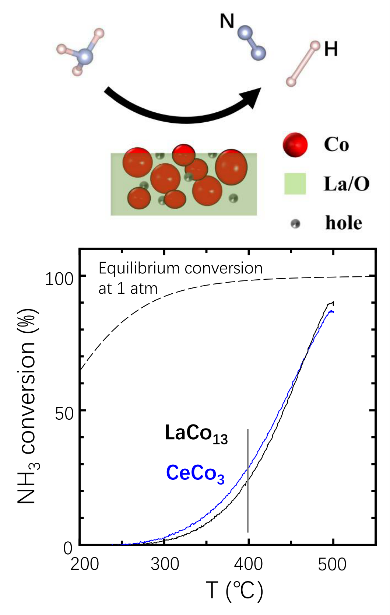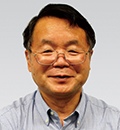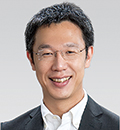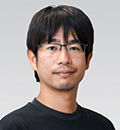Nanomaterials Field
ElectroActive Materials Team
Creation of functional materials based on original concept/idea.
Team Leader: Hideo Hosono
Exploration and design of novel catalysts and devices utilizing unique quantum material surface states
Current Topics
We fabricated Co-based catalysts with inverted structures by the low-temperature thermal decomposition of R–Co intermetallics (R = rare earth) to reduce the temperature of ammonia cracking for hydrogen production. The Co13/LaO1.5 nanocomposite exhibited superior catalytic activity (91 % at 500ºC). Increasing the interface area between the catalyst and the support enhances catalytic reaction in the inverse catalysts having a metal-rich composition. [1] We also synthesized a barium orthosilicate oxynitride-hydride Ba3SiO5-xNyHz as a transition-metal-free catalyst for efficient ammonia synthesis. The ammonia synthesis rate is comparable to that of a benchmarked catalyst Ru:MgO and reaches 40.1 mmol g-1 h−1 at 300ºC by loading ruthenium nanoparticles. This demonstrates a new route for anion-vacancy-mediated heterogeneous catalysis.[2]

Fig. 1. Temperature dependence of conversion in NH3 cracking over various Co-based inverse catalysts.
Outline of Research
Our research goal is to create novel functionality utilizing electrons in solids by cultivating new frontiers in materials science. Revolutionary semiconductors, superconductors, and catalysts are our outcomes targeted. Transparent amorphous semiconductors (TAOS) represented by IGZO and high-Tc iron-based superconductors have been created. Recently, we have focused on materials for the production, liquefaction, or transportation of hydrogen to contribute to realizing a hydrogen society.
References
- H. Mizoguchi et al., J. Phys. Chem. Lett. 16, 796 (2025). DOI: 10.1021/acs.jpclett.4c03309
- Z.-J. Zhang et al., Nat. Chem. (2025). DOI: 10.1038/s41557-025-01737-8
Group members
-
 Hideo Hosono・Team Leader・Distinguished Fellow
Hideo Hosono・Team Leader・Distinguished Fellow -
 Satoru Matsuishi・Principal Researcher
Satoru Matsuishi・Principal Researcher -
 Takayuki Harada・Independent Researcher
Takayuki Harada・Independent Researcher


